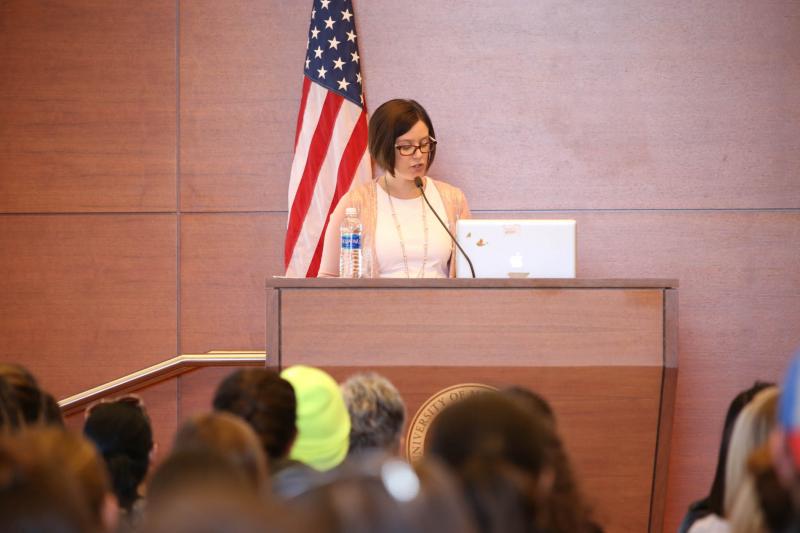UMass Dartmouth professor's reminder to 'think before you pink'
Though many may think supporting the pink ribbon means taking a step closer to curing breast cancer, UMass Dartmouth’s Dr. Kristen McHenry shone a light on the dark side of the pink ribbon movement.
In October 2015, McHenry published her book, “The Green Solution to Breast Cancer: A Promise for Prevention,” which assesses the link between breast cancer and its possible environmental causes as well as social, corporate and gender-related factors. Over nearly a decade, McHenry examined the rise in rates of breast cancer, the environmental causes behind the rise and breast cancer awareness activism.
According to “The Green Solution,” the lifetime risk of breast cancer for women has risen since the 1960s when the campaign against breast cancer began to pick up traction. In 1964, a woman’s risk of getting cancer was one in 20. By 1984, the risk had risen to one in 16. Today, one in eight women will get breast cancer in her lifetime. By the ‘90s, people were finding that certain communities had a much higher concentration of breast cancer cases. Cape Cod is one of those communities with a 20 percent higher rate of breast cancer than in the rest of the state.
“Why are things getting worse, not better, when we know so much more?” McHenry asked.
McHenry asserts that the statistical increase is due to environmental hazards such as pesticides, chemicals like BPA and water contamination and pollution, all which have risen exponentially in the last few decades.
She also criticized the consumer-based “Think Pink” movement which places an emphasis on awareness rather than prevention. Often, people feel that purchasing a pink ribbon item means they are contributing to a cause.
“That’s where many people stop,” McHenry said.
One of the biggest names in the pink ribbon movement is Susan G. Komen for the Cure. However, the company has been known to take legal action against other organizations that use “for the cure,” has created and sponsored a number of products that have ingredients linked to breast cancer, and takes donations from corporations like General Electric, one of the largest makers of mammogram machines.
Because this consumer-based model is largely funded by corporations, the movement is very much colored by corporate gain, McHenry said. Though the pink ribbon movement has provided visibility and awareness to breast cancer, it has not done enough to address prevention or underlying environmental factors.
The pink ribbon is not licensed by any corporation, many pinkwash their products by using the symbol and not donating funds to cancer research or by using it on products that contain carcinogens. Pinkwashing, a term coined by Breast Cancer Action, is when a corporation “purports to care about breast cancer but makes products linked to it,” McHenry said. Pinkwashing also occurs when corporations receive disproportionate amounts of money or publicity for donating very little.
An example of this was the 2008 Yoplait “Save Lids to Save Lives” campaign where Yoplait would donate ten cents for every yogurt cap saved and sent in. However Yoplait contained a bovine growth hormone called rBGH, which has been linked to increases in breast cancer.
Often, companies must be publically shamed into removing carcinogens and other harmful chemicals from their products because there is no federal regulations that say companies must disclose what chemicals are in their products. Since the establishment of the Toxic Substances Control Act of 1976, only five chemicals have been banned while there are 85,000 chemicals on the market. On the ingredients for a product, buzzwords like “fragrance” may indicate potentially harmful chemicals that companies are under no obligation to disclose.
McHenry’s best advice to both consumers and activists is to question their consumption: what organizations or companies is the money going to? Does any money go to supporting breast cancer programs? Is there a cap on donations, where corporations will provide only up to a fixed amount before the rest of the money becomes purely profit? Does it expose you to any toxins?
If you are concerned about what toxins you may be putting on or in your body, McHenry recommends the Skin Deep Cosmetics Database. Skin Deep is available as an app where you can scan barcode products to see a rating of how much toxins they may contain.
















